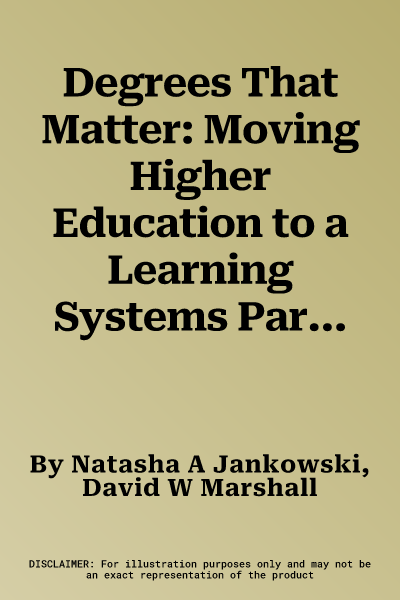Sponsored by
Concerned by ongoing debates about higher education that talk past one
another, the authors of this book show how to move beyond these and
other obstacles to improve the student learning experience and further
successful college outcomes. Offering an alternative to the culture of
compliance in assessment and accreditation, they propose a different
approach which they call the Learning System Paradigm. Building on the
shift in focus from teaching to learning, the new paradigm encourages
faculty and staff to systematically seek out information on how well
students are learning and how well various areas of the institution are
supporting the student experience and to use that information to create
more coherent and explicit learning experiences for students.
The authors begin by surveying the crowded terrain of reform in higher
education and proceed from there to explore the emergence of this
alternative paradigm that brings all these efforts together in a
coherent way. The Learning System Paradigm presented in chapter two
includes four key elements--consensus, alignment, student-centeredness,
and communication. Chapter three focuses upon developing an encompassing
notion of alignment that enables faculty, staff, and administrators to
reshape institutional practice in ways that promote synergistic,
integrative learning. Chapters four and five turn to practice, exploring
the application of the paradigm to the work of curriculum mapping and
assignment design. Chapter six focuses upon barriers to the work and
presents ways to start and options for moving around barriers, and the
final chapter explores ongoing implications of the new paradigm,
offering strategies for communicating the impact of alignment on student
learning.
The book draws upon two recent initiatives in the United States: the
Tuning process, adapted from a European approach to breaking down siloes
in the European Union educational space; and the Degree Qualifications
Profile (DQP), a document that identifies and describes core areas of
learning that are common to institutions in the US. Many of the examples
are drawn from site visit reports, self-reported activities, workshops,
and project experience collected by the National Institute for Learning
Outcomes Assessment (NILOA) between 2010 and 2016. In that six-year
window, NILOA witnessed the use of Tuning and/or the DQP in hundreds of
institutions across the nation.

